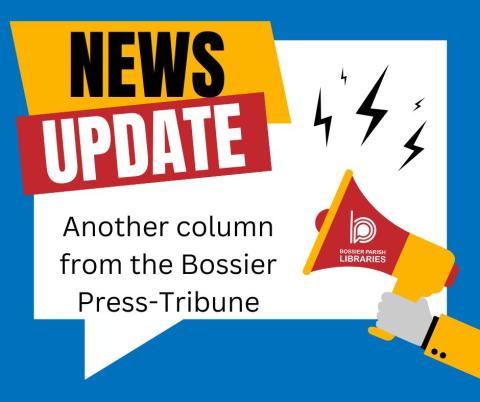
Plain Dealing Man Earns Bronze Star During First Major Battle of Vietnam
Christmas of 1965 is likely one that Plain Dealing native Dr. Tone Johnson won’t forget. He was recovering from wounds suffered in the first major confrontation in Vietnam between U.S. forces and North Vietnamese troops – the Battle of Ia Drang Valley. Prior to this engagement, American involvement had been mainly advisory. That changed with this battle and left a lasting impact on Johnson’s life. What follows is not an uplifting read, but one of courage and bravery in a fight for survival.
With echoes of the brutal Korean conflict still reverberating across East Asia, the United States stepped up its attempts to halt the spread of communism across the continent by sending combat units to Vietnam in the spring of ’65. That fall, Johnson’s outfit - the 2nd Battalion, 7th Calvary Regiment - faced an enemy that was, as stated in an article in the military news source Stars and Stripes, “well-trained, well-equipped” and “prepared to stand and fight.” The jungle canopy, chest-high elephant grass and vehicle-sized termite mounds gave the North Vietnamese a distinct advantage.
For Johnson, Ia Drang was literally a world away from the life he’d known growing up in Plain Dealing. The son of a farmer and a graduate of Carrie Martin High School, he enlisted in the Army at age 17 after graduation, and as a private first class, found himself among those souls airlifted into a nightmare.
Air mobility – landing and extracting troops and supplies by helicopter - was a new concept at the time and one the Army was ready to test in battle. For the 2nd Battalion, that test started on November 16th as the unit was dropped off at a point called LZ (Landing Zone) X-Ray to relieve the men of 1st Battalion, 7th Calvary, who had been in a fierce firefight for nearly three days with three enemy regiments. With the assistance of airstrikes and artillery support, the North Vietnamese were driven back, and the 2nd was ordered to march the following day a few miles to a new landing zone, LZ Albany, for extraction.
Marching in heat and humidity while exhausted and hungry was not a task the 2nd Battalion was eager to do, but ignoring orders was not an option. The march proceeded uneventfully, until the men stopped to rest. That’s when, as Johnson recalled in an article in The Times in 1997, “All hell broke loose.” Enemy troops hiding under jungle cover opened up on the Americans with mortar and sniper fire. The 2nd returned fire, but was outnumbered. Johnson fell unconscious after being shot and hit by shrapnel. During a Vietnam War summit televised by C-SPAN in 2016, Johnson described what happened when he awoke. “I felt my face, and it was like somebody had caked mud all over my face,” he said. “It was my own blood, and it was covering my eyes, and I couldn’t see.” Eventually, Johnson was able to continue firing, and as with the fighting at LZ X-Ray, airstrikes and artillery finally drove back the enemy, and Johnson and the other survivors were able to receive medical attention. According to the Defense POW/MIA Accounting Agency, 155 men of the 2nd were killed in the ambush in what the Stars and Stripes article calls “the U.S. military’s single bloodiest day in Vietnam through the entire war.” Seventy nine other Americans lost their lives at LZ X-Ray.
The Battle of Ia Drang Valley left no doubt that the conflict in Vietnam would be long and costly. It was detailed in the best-seller “We Were Soldiers Once…and Young,” written by Lt. General Harold Moore and journalist Joseph Galloway, and in the movie “We Were Soldiers” starring Mel Gibson. For his part, Johnson would be awarded the Bronze Star for bravery. The care he received in the hospital convinced him to pursue a career in medicine. But Johnson is apparently uneasy being called a hero. In The Times article from ’97, he is quoted as saying, “I’m just an ordinary guy who made it through with a little bit of ….willpower. I really think if I wouldn’t have had a concept of God and country, I wouldn’t have made it.”
If you have any letters, photos or other information relating to residents of Bossier Parish who’ve served in the military, the History Center may be interested in adding the material to its research collection. Call or visit us to learn more. We are open M-Th 9-8, Fri 9-6, and Sat 9-5. Our phone number is (318) 746-7717 and our email is history-center@bossierlibrary.org. We can also be found online at https://www.facebook.com/BPLHistoryCenter/ and http://bpl-hc.blogspot.com/.
Images:
- Dr. Tone Johnson/courtesy Newspapers.com (taken from article in The Times from 1997)
- Huey helicopter/courtesy Pixabay.com
- Book cover/courtesy Amazon.com
Article by: Kevin Flowers